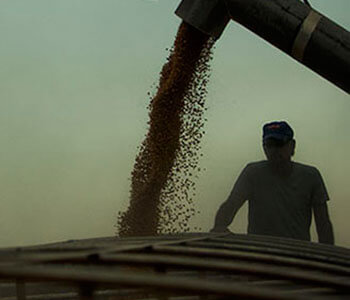Great Bend Co-op Agronomy Weekly - January 28 2019
Jan 27, 2019

Getting to the Next Level of Yield
Whether you are implementing new ag technology, hiring an agronomist, or applying that extra pass of water, your ultimate goal is usually the same: getting maximum bushels and return on investment.
Here are few highlights from the High Yield Clinics we held for our customers earlier this month.
Planting Date – Historically, planting dates have been determined by the calendar or by when the neighbor starts planning. However, soil temperature plays a huge role in planting decisions. Uniform emergence in a crop stand or lack thereof can be a major factor in final yield. The biggest thing to remember is that planting date is a local decision. Decide based on current factors for the field you are planting. Also remember that depending on the planting date, you may need to adjust your planted population.
Seeding – Variable Rate seeding is a fairly new topic in our region. Typically, when variable rate seeding corn, you will plant less plants in the poor areas of the field and higher plant population in the better part of the field. However, when discussing variable rate seeding on soybeans, the trend is the opposite. Another input that may help increase yield is your seed treatment package.
Starter Fertilizer – Most producers in our area are already using some level of starter fertilizer at planting. This starter is key in starting a corn crop off right. From emergence to about V3 or 3 Leaf corn, that plant is relying completely on the seed for nutrients. At V3-V4 the seedling roots start to explore the soil for nutrients. It is imperative to have fertilizer near these small roots to keep the plant growing and strong. If you are currently running a blend that includes Nitrogen, Phosphorus, and Zinc, consider adding a premix that includes some Potassium, Sulfur, and Manganese to get to that next level of starter fertilizer.
Early Season Weed Control – Weeds are constantly competing with our crops, but even more so at the beginning. They are not only taking fertilizer and water from the crop, but also competing for light and space as well. Corn leaves will even adjust their orientation from across the row to into the row if there are weeds in between the rows. Consider using at least 3 different effective modes of action in the growing season to with resistance management and weed control.
Nutrient Management – Nutrient inputs are one of the highest expenses in growing a crop. To avoid losing nitrogen to environmental factors such as leaching or volatilization, consider adding a nitrogen stabilizer and split applying your fertilizer throughout the season. Most base their fertility plans off soil testing, which is a great starting off point. Producers should also consider adding in tissue sampling during the growing season. Tissue testing can help you see what’s happening in the plant, and make adjustments as needed, and potentially help in making management decisions for the next crop as well.
The key take-away from all of these things is to manage your crop based on the yield determining growth stages and on a field by field basis.
